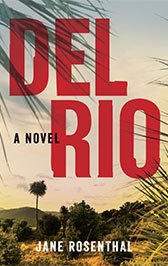It’s really no mystery why the farming town of Corcoran, located in Central California’s San Joaquin Valley, is sinking. The ground on which the town was built has been slowly, but steadily collapsing due to agriculture.
Over the past 14 years, Corcoran has sunk as much as 11 feet or more in some places, making it one the fastest-sinking areas in the U.S., according to experts at the USGS. What’s happening in this sinking town? It’s the phenomenon known as subsidence.
Subsidence is the slow-motion deflation of the land that happens when large amounts of water are withdrawn from aquifers deep under the ground. The result is that underlying sediments start to fall in on themselves.
The process of subsidence is not a dramatic one; no home, buildings, or roads in Corcoran are crumbling. Rather, subsidence is a slow, but relentless process. Every year, the town, encompassing 7.47 square miles, and its 21,960 residents sink in small increments, anywhere from a few inches to a few feet.
Corcoran is sinking
Corcoran sits at the center of an area near Kings County that stretches, at times, up to 60 miles. Known as the “Corcoran Bowl,” the area is a region of deep sinkage in the land. Scientists at NASA’s Jet Propulsion Lab have been spending years tracking subsidence in the Corcoran Bowl and other regions of the San Joaquin Valley using radar and satellite data.
Jane's second novel!

A once-thriving Central Valley farm town, is now filled with run-down Dollar Stores, llanterias, carnicerias, and shabby mini-marts that sell one-way bus tickets straight to Tijuana on the Flecha Amarilla line. It’s a place . . .
In Corcoran as in other parts of the San Joaquin Valley, the land has been subsiding primarily due to agriculture. For decades, agricultural companies have been pumping underground water to irrigate their crops, according to the USGS California Water Science Center.
Even though Corcoran has only sunk about four feet in some areas since 2015, it’s already had an effect on the town’s topography as well as the wallets of the population of Corcoran. Flood zones have shifted, the casings of drinking wells have been crushed. Residents saw their property tax bills increase about $200 per year for three years in order to fund the rebuilding of the town’s levee at a cost of $10 million.
Unfortunately, the continued subsidence in Corcoran creates a conundrum for the residents because agriculture provides the lion share of jobs in an economically-struggling region. Approximately 30% of the working age residents in Corcoran work in the farming industry, and more than 30% of its residents live in poverty.
A water management agency estimates that the city will continue to sink another 6 to 11 feet over the next 19 years, putting a lot of the city’s infrastructure at risk. Therefore, planning for the effects of continued subsidence in the area is important for all involved water agencies.
Your new favorite California town
Del Rio, a new novel by Jane Rosenthal, is set in the fictional Central Valley farm town of Del Rio. Although it’s not Corcoran, Corcoran and other small towns in the Valley were the inspiration for the setting of Del Rio, towns the author visited many times during the 15 years that she lived on her ranch in the mountains above the Central Valley.
Jane's first novel!

When Lili Golden’s beautiful sister, owner of The Palace of the Blue Butterfly art gallery, disappears in Mexico’s enormous capital, Lili abandons her comfortable stateside life to search for her. Soon she finds herself swept into her sister’s glittering world . . .
